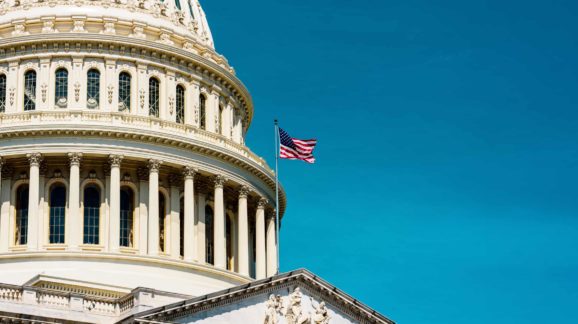The Most Wasteful Infrastructure Bill Ever?

Photo Credit: Getty
The $1.2 trillion dollar Infrastructure Investment and Jobs Act will be signed into law by President Biden on Monday. If it is like past infrastructure bills, we can expect considerably less than 100 cents on the dollar to be spent wisely. In fact, it may prove to be the most wasteful infrastructure bill ever, given the extent that climate change considerations will lead to further misallocations of resources.
We are used to the problems endemic to previous infrastructure spendathons. Bring-home-the-bacon projects tend to get a higher priority and a bigger budget than they deserve. The states that favor the party in power typically receive more per capita than those that do not, regardless of actual needs. Billions fill the coffers of trade unions and other special interests, who dutifully kick back a portion to their political benefactors in the form of campaign contributions. All of this waste will also be seen with the Infrastructure Investment and Jobs Act, and in addition much of the spending decisions will be distorted by climate policy considerations.
A White House Fact Sheet has made explicit that many of the spending choices will be climate policy-driven. The president has pledged to “rebuild our roads and bridges with a focus on climate change mitigation” and “make our infrastructure resilient against the impacts of climate change.” But if the administration’s obsession with apocalyptic climate change is misplaced, then so is the infrastructure spending choices that support it, and we will be left with a lot of infrastructure spending but not a lot of infrastructure improvements.
For example, the $17 billion to improve America’s ports may sound like a good idea in light of all the supply chain problems the nation is currently experiencing. However, a close look at the port provisions in the bill reveals several climate-related priorities that won’t do a thing to improve the flow of goods, such as funds to transition ports away from using fossil fuels and toward renewable electricity.
Likewise, a good bit of the $70 billion targeted for improving America’s electric grid will be wasted. The bill steers much the funds to green projects like transmission lines bringing additional wind energy from remote areas to customers—investments unlikely to do much good given the intermittent and unreliable nature of wind power.
Past federal spending on public transit has always been out of proportion to actual ridership, but the Infrastructure Investment and Jobs Act really goes off the deep end. The White House promises to “improve transportation options for millions of Americans and reduce greenhouse emissions through the largest investment in public transit in U.S. history.”
The bill hands $66 billion to Amtrak and $39 billion for all other public transit—which may seem small by comparison to the rest of the bill, but is the largest-ever such allocation. The spending per transit user is likely to go through the roof, especially in a post-COVID world where even fewer Americans than before are likely to prefer packing into buses and trains over taking their own cars.
There is plenty of infrastructure funding directed at low-income communities, but once again, climate considerations take precedence. For example, the bill provides $7.5 billion in subsidies for electric vehicle charging stations, and includes requirements that poor inner-city neighborhoods get their share. Yet, few residents in these communities have electric vehicles, and there is little reason to expect that to change. Most likely, these expensive charging stations will sit unused in the middle of communities with more pressing needs.
Past infrastructure bills were hardly models of efficiency. But the climate provisions in the Infrastructure Investment and Jobs Act suggests this will yield even less bang for the buck.